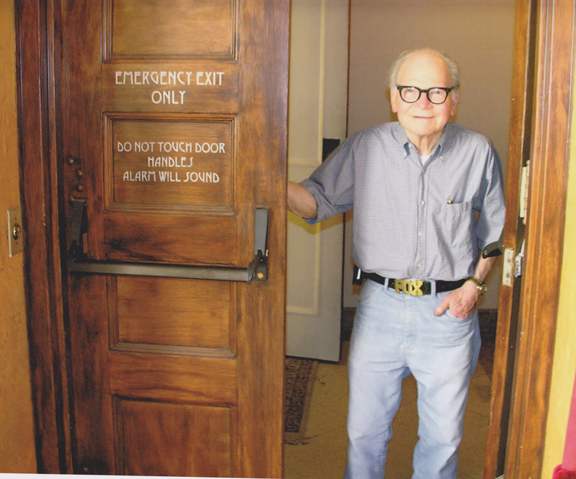Joe's big love in his life
was pipe
organs. At first, it was directed at church organs, but later he was
focused on theater organs, particularly the large pipe organs of the
massive movie palaces that during the 1950s were rapidly being razed
during that era. Joe was a founding member of the Atlanta
Chapter
of the American Theater Organ Enthusiasts, later renamed American
Theater Organ Society, or ATOS.With his fellow associates, they
continually attempt to save and salvage many theater organs across the
United States.
A great example of the Atlanta ATOS' efforts is the Grande Page
theatre organ. It was the first of the Page
Company’s crown
jewel, four-manual organs. It was originally installed in 1927 at the
WHT radio studios of the Wrigley Building in downtown Chicago. It was
said to be the largest such organ ever built for a radio studio. It
found itself being moved from several places, then finally winding up
on the hands of the Atlanta Chapter. After negotiations, it
was
placed in what is hoped to be it's permenant home at the Stephenson
High School in Stone Mountain, Georgia. After years of work and a
fundraising effort that raised over $70,000 for the installation and
restoration, the organ was dedicated on April 3, 2014. (it
should
be said that Joe did not participate in the organ's restoration due to
his health issues.)
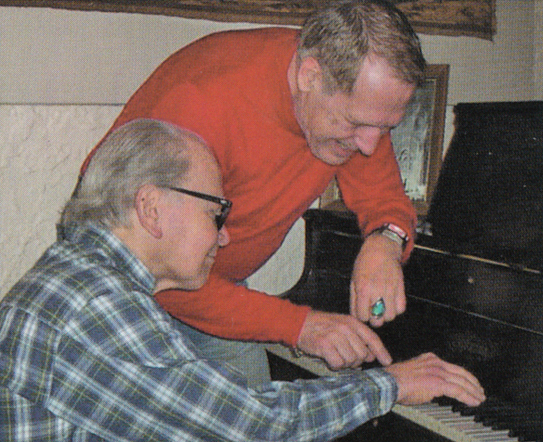 |
Fox Theatre's former "Organist At Residence" and close
personal friend of Joe Patten, Larry Douglas Embury,
giving Joe a piano
lesson on Joe's 1906 Chikering "reproducing" grand piano. |
While Joe Patten had a great knowledge of the mechanics and operation
of pipe organs, Joe would never attempt to play any of them, even the
Mighty Mo at the Fox. He preferred to sit back in the logé
of the Fox balcony and listen to his friends, Bob Van Camp, Hector
Olivia, John McCall, and Larry Douglas Embury perform. When asked about
this, Joe said he felt he could never attain the proficency needed to
master playing the pipe organ, so her preferred to simply listen to
others play them.
Joe remained an active
member of the
American Theater Organ Society. He continued to
participate with the ATOS up
to the time of his death. Joe had hosted a recital for the
ATOS
in his
apartment just a month prior to his passing. In addition to Joe being a
founding member of the Atlanta Chapter, he was a recipient of its
Lifetime Achievement Award and recipient of the Pioneer Award
from
the American Theatre Organ Society.
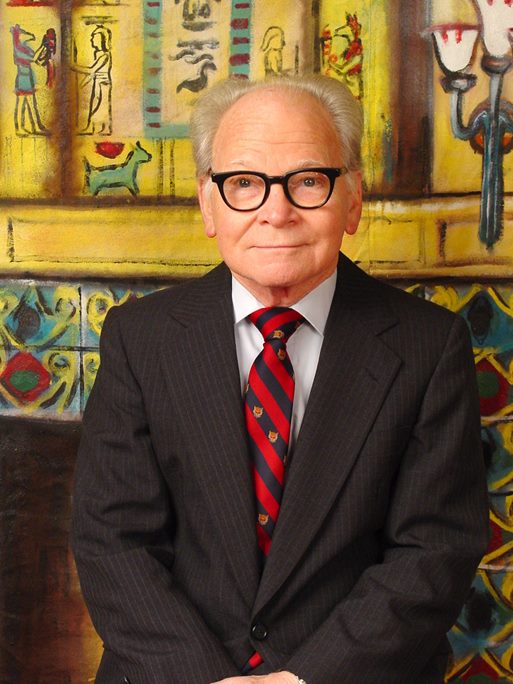
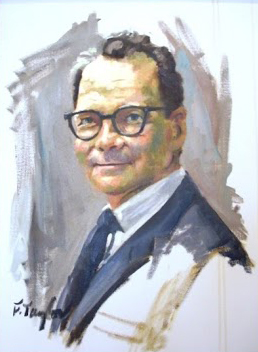 They called him the Phantom, the Phantom of the
Fox!
They called him the Phantom, the Phantom of the
Fox! They called him the Phantom, the Phantom of the
Fox!
They called him the Phantom, the Phantom of the
Fox!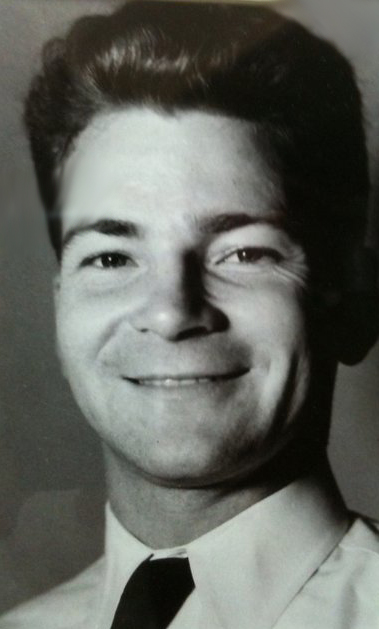 But unlike the fictional figure said to haunt the Paris Opera House,
this Phantom was real, an ardent, somewhat solitary, supremely gifted
man named Joe G. Patten. Until shortly before his death on April 7th,
2016
at age 89, Joe Patten had lived in rococo slendor in a sprawling
3.600 sq.ft. private apartment inside Atlanta’s historic Fox
Theatre.
But unlike the fictional figure said to haunt the Paris Opera House,
this Phantom was real, an ardent, somewhat solitary, supremely gifted
man named Joe G. Patten. Until shortly before his death on April 7th,
2016
at age 89, Joe Patten had lived in rococo slendor in a sprawling
3.600 sq.ft. private apartment inside Atlanta’s historic Fox
Theatre.
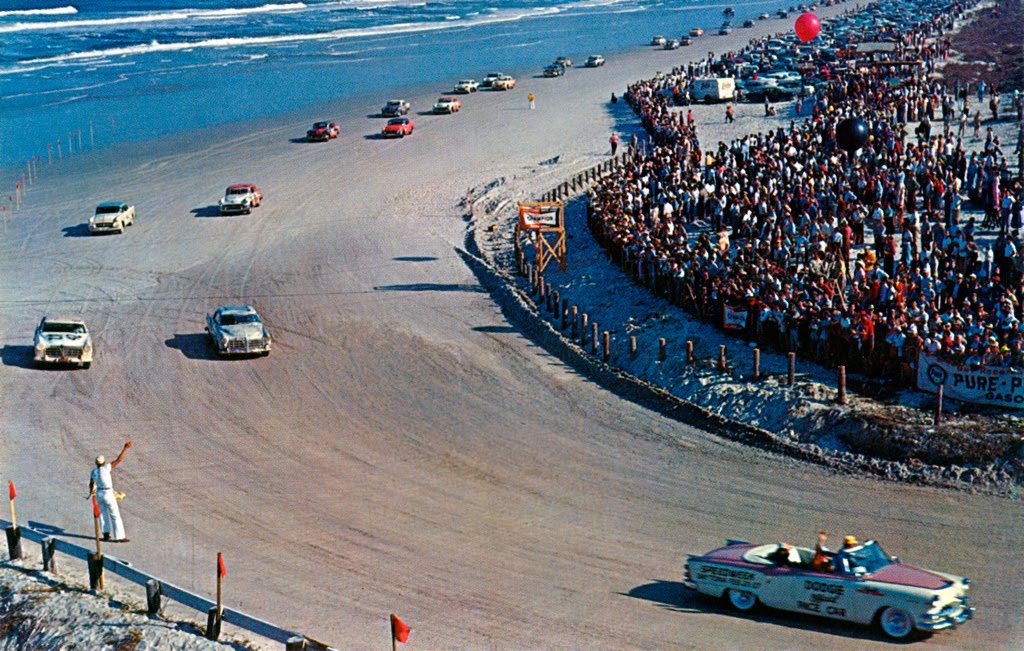

 Joe
had a very high powered 1958 Chevrolet Del Rey Coupe that actually was
his
Westinghouse company car he drove daily. He ultimately took the Chevy
with him to
South America to use on his assignment there. After work hours, the
group would eventually wind up on a bar that was frequented by other
automotive enthusiasts. It was there Joe
encountered another racing entrepreneur one evening who was a
huge
Ferarri fan and owner. After talking to this man, who believed Ferarri
was far superior to an everyman's Chevy, Joe was challenged to a race
between
Joe’s Chevy Bel Air and the man’s Ferrari.
Since this
person had political
connections, a ten mile stretch of a newly built expressway was closed
off and utilized to stage the contest.
Joe
had a very high powered 1958 Chevrolet Del Rey Coupe that actually was
his
Westinghouse company car he drove daily. He ultimately took the Chevy
with him to
South America to use on his assignment there. After work hours, the
group would eventually wind up on a bar that was frequented by other
automotive enthusiasts. It was there Joe
encountered another racing entrepreneur one evening who was a
huge
Ferarri fan and owner. After talking to this man, who believed Ferarri
was far superior to an everyman's Chevy, Joe was challenged to a race
between
Joe’s Chevy Bel Air and the man’s Ferrari.
Since this
person had political
connections, a ten mile stretch of a newly built expressway was closed
off and utilized to stage the contest.  A
deal was stuck where the group would provide the manpower at no cost,
if the Fox would provide the materials needed to return the organ back
to working order. Once the work was completed, ATOE would be allowed to
hold club meetings at the Fox during periods when the theatre was not
presenting a movie or other performances. Mr. Arnold saw this as a
great opportunity to have the organ repaired at very little cost and
readily agreed to the agreement.
A
deal was stuck where the group would provide the manpower at no cost,
if the Fox would provide the materials needed to return the organ back
to working order. Once the work was completed, ATOE would be allowed to
hold club meetings at the Fox during periods when the theatre was not
presenting a movie or other performances. Mr. Arnold saw this as a
great opportunity to have the organ repaired at very little cost and
readily agreed to the agreement. 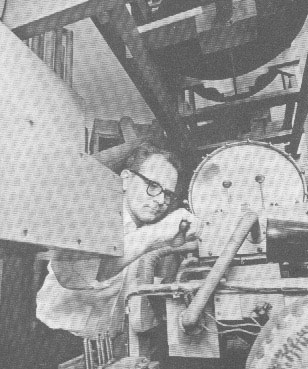 The
restoration process began with an inventory and thorough assessment of
the instrument. For some unexplained reason, the organ's pipe chambers
had become filled with trash and debris that had to be removed. During
the assessment, it was determined that a primary reason for the organ's
failing state was due to a design or installation flaw. As I understand
the history of the Fox, as the building's construction was beginning to
wind down, it was discovered that there was a small amount extra cash
on hand. It was decided to put that money into useful enhancements to
the auditorium and stage. One of those enhancements was the addition of
screw-driven lifts in the orchestra pit, where the organ would reside,
and on the stage.
The
restoration process began with an inventory and thorough assessment of
the instrument. For some unexplained reason, the organ's pipe chambers
had become filled with trash and debris that had to be removed. During
the assessment, it was determined that a primary reason for the organ's
failing state was due to a design or installation flaw. As I understand
the history of the Fox, as the building's construction was beginning to
wind down, it was discovered that there was a small amount extra cash
on hand. It was decided to put that money into useful enhancements to
the auditorium and stage. One of those enhancements was the addition of
screw-driven lifts in the orchestra pit, where the organ would reside,
and on the stage. 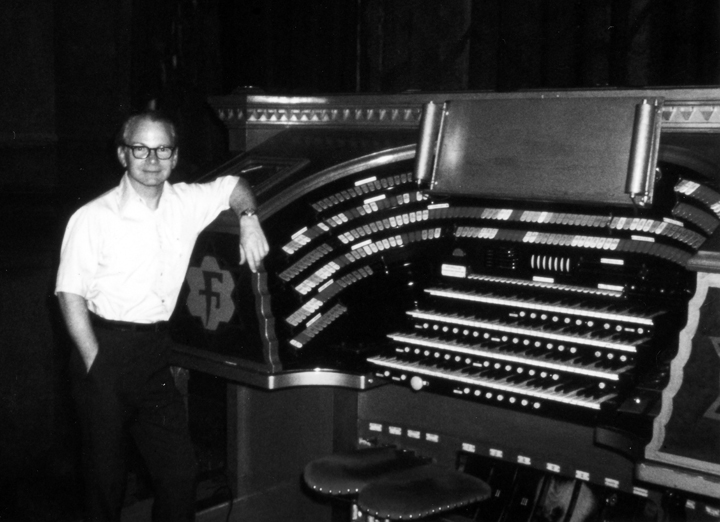
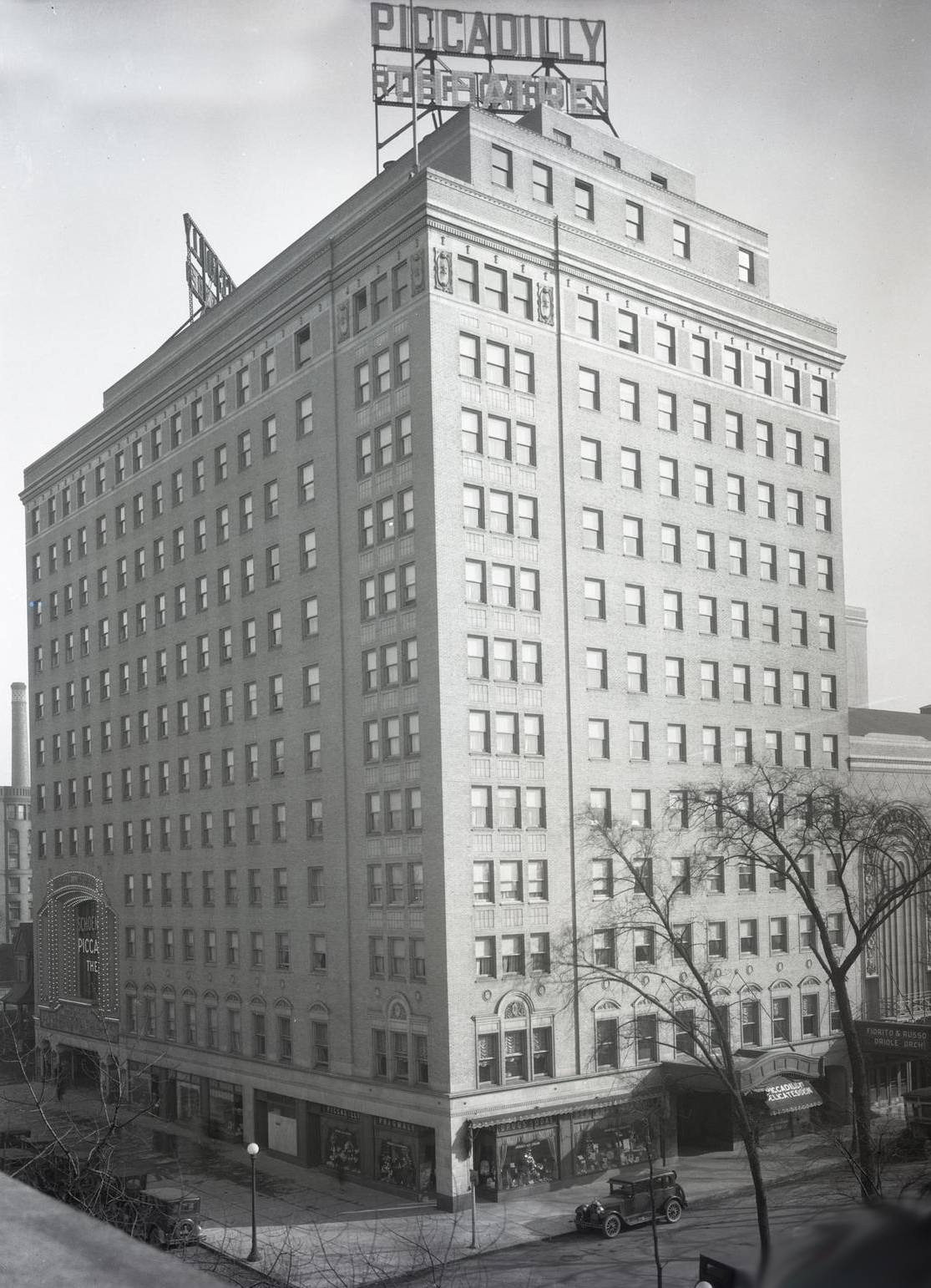
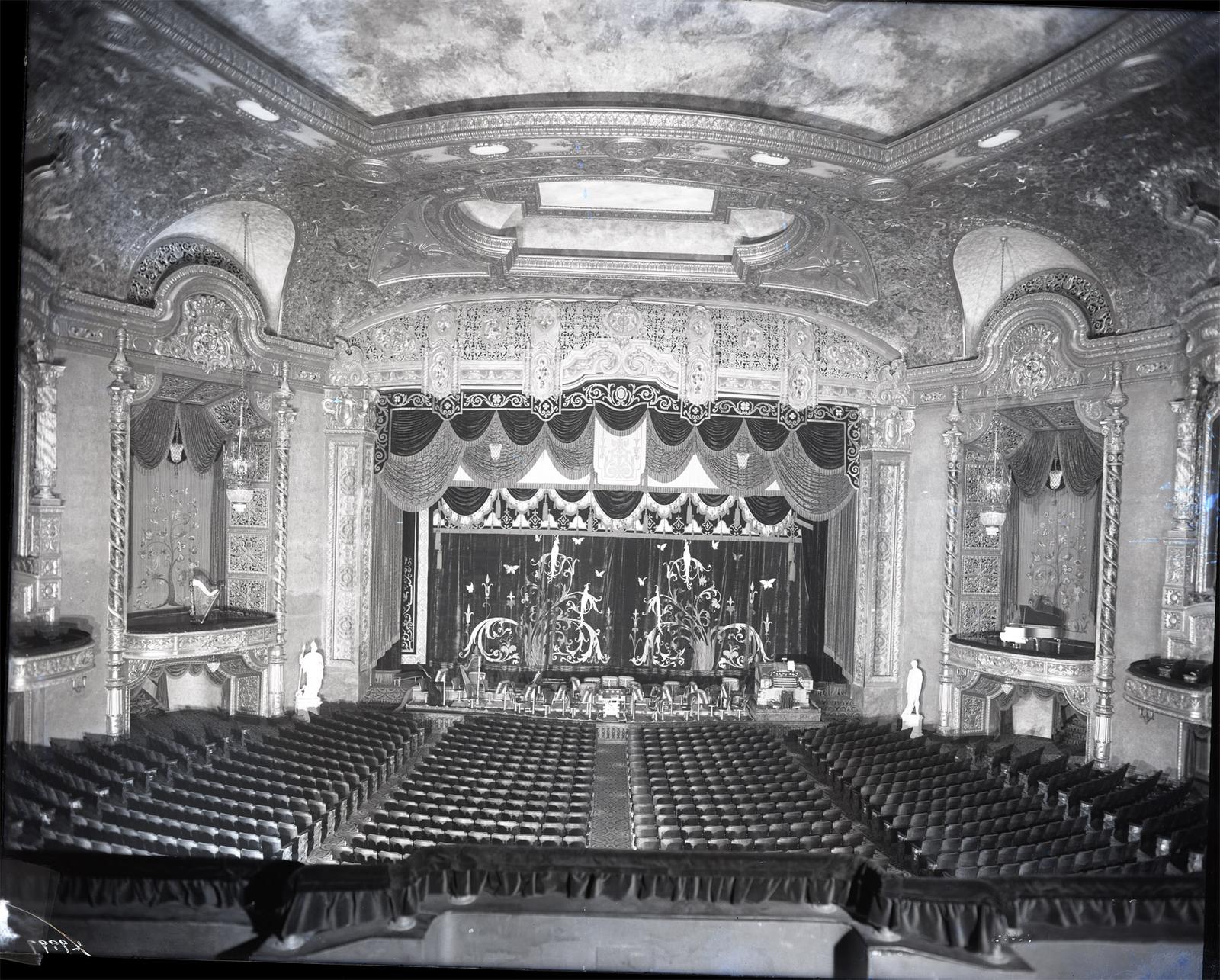 In
1965, Joe travelled to Chicago, Illinois to purchase a unique piano. It
was a Baldwin Grand Piano originally installed in the Piccadilly
Theatre in Chicago. The piano had been connected to the
theater’s
Kilgen 4 manual, 19 rank theatre organ so it could be operated from the
organ console remotely. The piano sat in the open on the right hand
side of the auditorium in a faux Opera Box. On the opposite side of the
theater, a harp sat in box across from the piano. The theater had
opened in 1927 and according to Cinema Treasures while the piano was
fully operable, it was never played until the last day the theater was
open in 1963.
In
1965, Joe travelled to Chicago, Illinois to purchase a unique piano. It
was a Baldwin Grand Piano originally installed in the Piccadilly
Theatre in Chicago. The piano had been connected to the
theater’s
Kilgen 4 manual, 19 rank theatre organ so it could be operated from the
organ console remotely. The piano sat in the open on the right hand
side of the auditorium in a faux Opera Box. On the opposite side of the
theater, a harp sat in box across from the piano. The theater had
opened in 1927 and according to Cinema Treasures while the piano was
fully operable, it was never played until the last day the theater was
open in 1963. 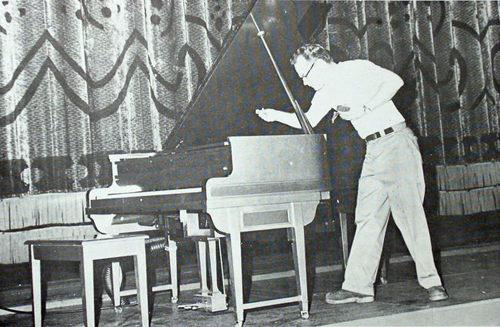
 Joe purchased the piano with his own money. He
traveled to Chicago to
perform the uninstall of the piano himself, then brought it back to the
Atlanta Fox in order to interface it with the Fox’s Mӧeller
organ. Joe utilized his inherent talent, skills, and design prowess to
create a custom electro-mechanical pneumatic action to make the remote
capability a reality. In a short period of time, the work was complete
and audiences were thrilled and amazed at how the piano now seemed to
play all by itself, while all the time, Bob Van Camp was in
control of it from the Mighty Mo’s console. It was dubbed the
Phantom Piano!
Joe purchased the piano with his own money. He
traveled to Chicago to
perform the uninstall of the piano himself, then brought it back to the
Atlanta Fox in order to interface it with the Fox’s Mӧeller
organ. Joe utilized his inherent talent, skills, and design prowess to
create a custom electro-mechanical pneumatic action to make the remote
capability a reality. In a short period of time, the work was complete
and audiences were thrilled and amazed at how the piano now seemed to
play all by itself, while all the time, Bob Van Camp was in
control of it from the Mighty Mo’s console. It was dubbed the
Phantom Piano!
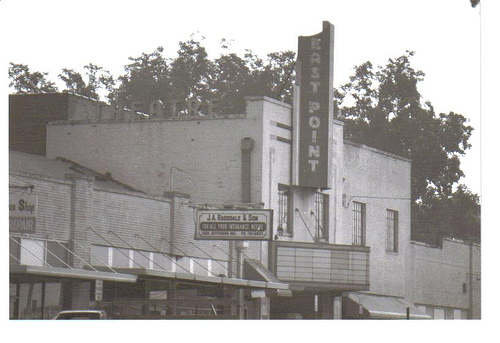 In the early 1970s, Joe purchased the East Point Theater. It was
located on a on Main Street in East Point, Georgia, right
across
the way from Russell High School. It was a 600 seat, post-war, suburban
cinema situated in a block long row of commercial buildings. There was
nothing exceptional about the East Point, as it was a non-descript
standard neighborhood cinema with a bit of an art deco motif.
It
was his intention to renovate the cinema and operate it himself once he
retired from Westinghouse.
In the early 1970s, Joe purchased the East Point Theater. It was
located on a on Main Street in East Point, Georgia, right
across
the way from Russell High School. It was a 600 seat, post-war, suburban
cinema situated in a block long row of commercial buildings. There was
nothing exceptional about the East Point, as it was a non-descript
standard neighborhood cinema with a bit of an art deco motif.
It
was his intention to renovate the cinema and operate it himself once he
retired from Westinghouse. 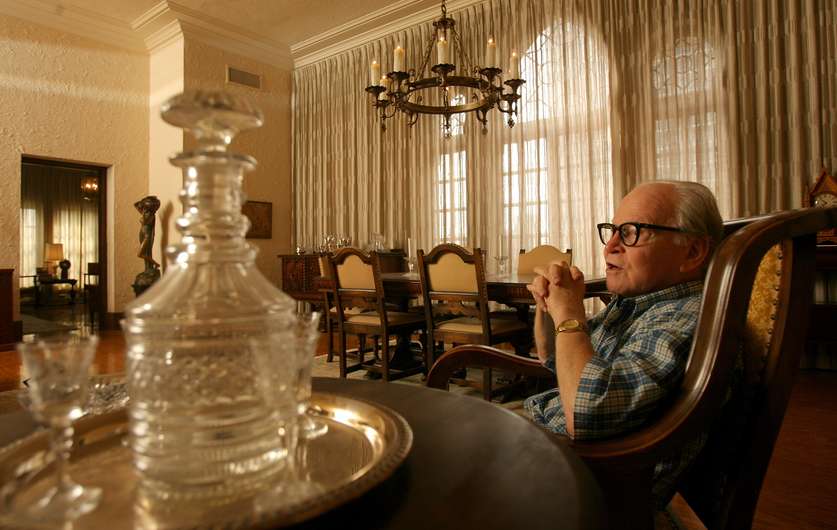

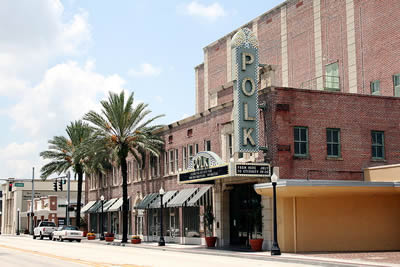 In the 1980s, Lakeland Florida
residents began to restore the Polk
Theatre. The 1,400 seat theatre was built in 1928. Like the Atlanta Fox
Theatre, the auditorium was createed in the atmospheric style to give
the illusion of being outdoors in a renaissance revival style
courtyard. The atmospheric theater has a mezzanine, a high balcony, a
permanent backdrop of a "Venetian piazza," an orchestral pit, and
terrazo floors. The blue ceiling features high twinkling stars
with clouds. The air-conditioning system, one of the first in
the nation, employs a pump that uses artesian well water to chill the
building. The Atlanta Fox uses a similar water-based system.
In the 1980s, Lakeland Florida
residents began to restore the Polk
Theatre. The 1,400 seat theatre was built in 1928. Like the Atlanta Fox
Theatre, the auditorium was createed in the atmospheric style to give
the illusion of being outdoors in a renaissance revival style
courtyard. The atmospheric theater has a mezzanine, a high balcony, a
permanent backdrop of a "Venetian piazza," an orchestral pit, and
terrazo floors. The blue ceiling features high twinkling stars
with clouds. The air-conditioning system, one of the first in
the nation, employs a pump that uses artesian well water to chill the
building. The Atlanta Fox uses a similar water-based system.
 Joe
also developed a deep love for airplanes and learned to fly, soloing in
a Temco Swift aircraft that he had bought. This is somewhat unique, in
that a Swift was considered a very difficult plane to fly for a novice
pilot. Later he also acquired a Meyers 200, one of the most coveted
single engine light aircraft of the day. One of the stories that was
told at Joe’s memorial service was he was offered a Lockheed
P-38
Lightning along with two new motors for it in a crate for a mere $50.
Joe passed on it because he told this person he didn’t have
anywhere to put it!
Joe
also developed a deep love for airplanes and learned to fly, soloing in
a Temco Swift aircraft that he had bought. This is somewhat unique, in
that a Swift was considered a very difficult plane to fly for a novice
pilot. Later he also acquired a Meyers 200, one of the most coveted
single engine light aircraft of the day. One of the stories that was
told at Joe’s memorial service was he was offered a Lockheed
P-38
Lightning along with two new motors for it in a crate for a mere $50.
Joe passed on it because he told this person he didn’t have
anywhere to put it! 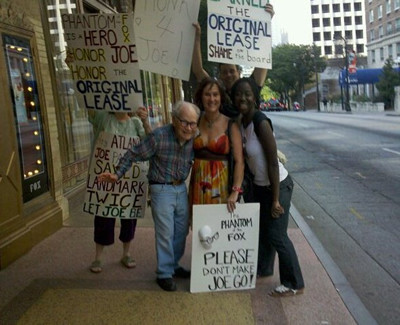
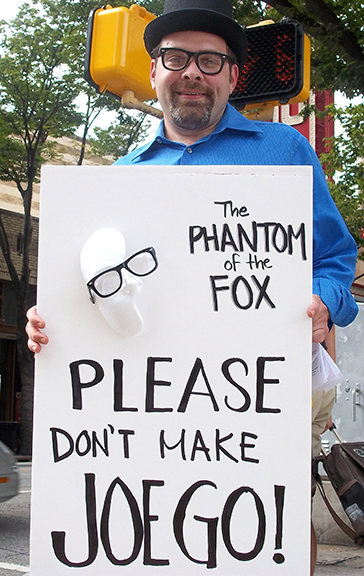 In 2010, at age 83, Mr. Patten was forced to wage his greatest
preservation
campaign on his own behalf: In old age, in a development that may
properly be called Oedipal, he battled eviction at the hands of the
very organization he had established.
In 2010, at age 83, Mr. Patten was forced to wage his greatest
preservation
campaign on his own behalf: In old age, in a development that may
properly be called Oedipal, he battled eviction at the hands of the
very organization he had established.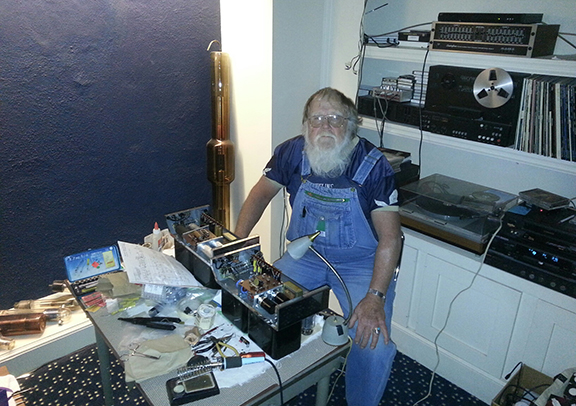


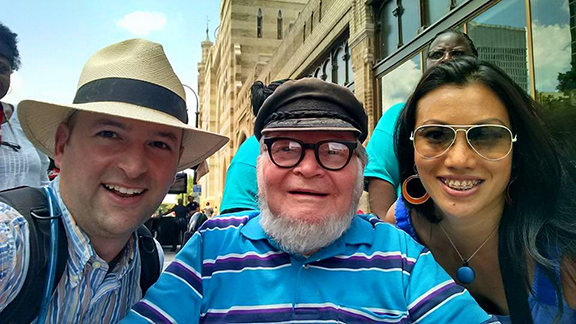
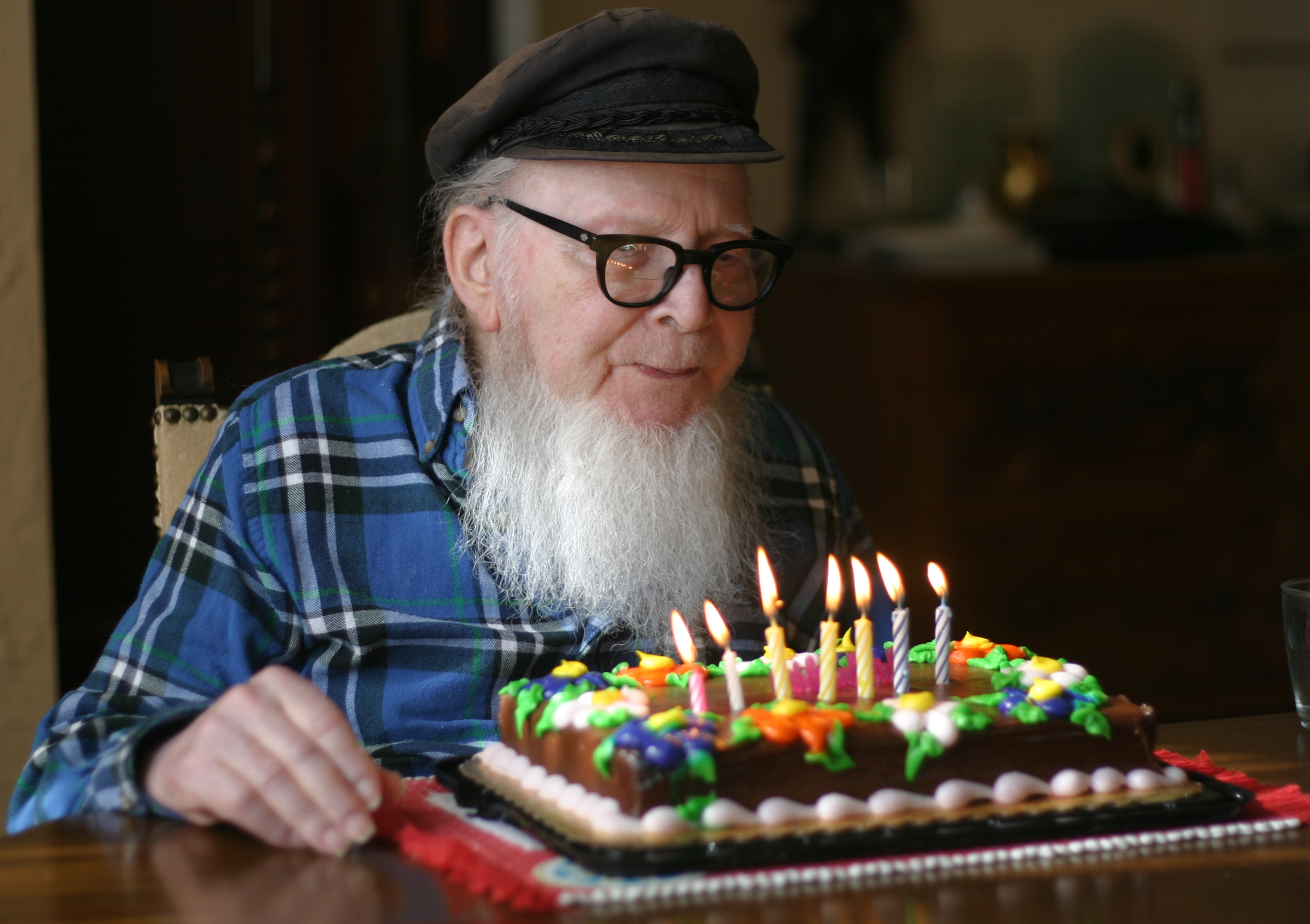
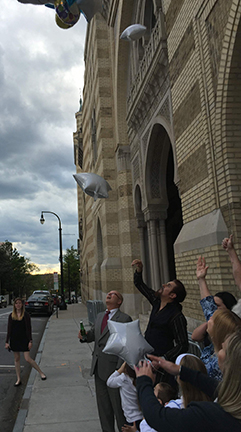
 During the last weekend of
March, 2016, Joe
suffered a seizure and was taken
to Crawford Long / Emory Midtown Hospital. The doctors sedated Joe in
order to prevent any discomfort. While sedated, Joe contracted
pneumonia and was placed on a ventilator. On April 2nd, Joe suffered a
stroke. It took several days for the doctors to realize the extent
of the brain damage, which was determined to be catastrophic.
During the last weekend of
March, 2016, Joe
suffered a seizure and was taken
to Crawford Long / Emory Midtown Hospital. The doctors sedated Joe in
order to prevent any discomfort. While sedated, Joe contracted
pneumonia and was placed on a ventilator. On April 2nd, Joe suffered a
stroke. It took several days for the doctors to realize the extent
of the brain damage, which was determined to be catastrophic. 